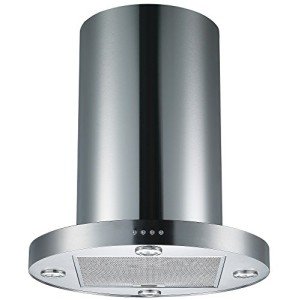5 Reasons To Be An Online Cooker Hood For Island And 5 Reasons To Not
페이지 정보

본문
Cooker Hood for Island: Essential Guide to Choosing and Installing the Right Model
In contemporary Kitchen Cooker island areas, the island hood has become a crucial appliance for property owners intending to integrate performance with design. Not just does it improve air quality by expelling smoke, smells, and grease, however it also functions as a style centerpiece. This short article checks out the importance of island hoods, the elements to think about when picking one, the different types offered, and installation suggestions.
Understanding Island Hoods
Island hoods are ventilation systems that hang above kitchen islands, normally where cooktops are set up. Unlike conventional range hoods, kitchen cooker Island which connect to walls, island hoods are often in the center of the kitchen, needing thoughtful consideration of design and efficiency.
Why Choose an Island Hood?
- Visual Appeal: An island hood can enhance the overall look of your kitchen, often available in various designs and finishes to complement your design.
- Improved Air Quality: By efficiently eliminating smoke, steam, and odors, island hoods assist maintain a fresh atmosphere in the kitchen island hood.
- Improved Lighting: Many island hoods come equipped with built-in lights, supplying additional lighting for cooking jobs.
Elements to Consider When Choosing an Island Hood
Choosing the best island hood includes thinking about numerous vital elements. Here's a combined summary:
1. Size and Dimensions
- Hood Width: The hood should cover a minimum of the width of the cooktop. For ideal performance, a general general rule is that it should extend 3 inches on each side.
2. Type of Ventilation
- Ducted: This type vents air outside, providing maximum efficiency. It's ideal for larger kitchens and those that cook frequently.
- Ductless: Ductless hoods recirculate air through filters. These are easier to set up however may not be as effective in bigger spaces.
3. Airflow Capacity
- CFM (Cubic Feet per Minute): This measurement suggests just how much air the hood can move. A greater CFM is better for heavy cooking, while lower CFMs are adequate for light usage. A basic recommendation is:
- Light Cooking: 200-400 CFM
- Medium Cooking: 400-600 CFM
- Heavy Cooking: 600+ CFM
4. Style and Design
- Think about numerous finishes and designs:
- Chimney Style: Features a wall-mounted chimney that hangs down.
- Canopy Style: A more compact option, typically mounted directly over the cooktop.
- Downdraft: Integrated into the cooktop, rising just when required.
5. Sound Level
- Sone Rating: This suggests the sound discharged by the hood. A sone score of 1-2 is thought about peaceful, while anything above 4 might be invasive.
6. Functions and Controls
- Lighting Options: Look for LED lighting for energy performance.
- Speed Settings: Multiple fan speeds can offer more control depending on the cooking circumstance.
- Filter Type: Select in between mesh, baffle, or triggered charcoal filters based upon upkeep and cooking style.
Setup Tips
Installing an island hood can be a challenging job. Here are some vital actions for a successful setup:

Choose the Right Height: Ideally, position the hood 30-36 inches above the cooktop for ideal performance and security.
Surface area Preparation: Ensure that the ceiling is structurally sound to support the weight of the hood.
Electrical and Ductwork: If choosing a ducted design, strategy for ductwork to be run to the exterior. Talk to a professional if required.
Follow Instructions: Always follow the producer's installation instructions for best practices.
Evaluate the System: Once installed, check the ventilation and lighting functions before completing any last touches.
Choosing and setting up a cooker hood for an 48 island range hood is an important investment in both the functionality and looks of a kitchen. By thinking about elements like size, ventilation type, air flow capability, design, installation standards, and user-friendly features, house owners can boost their cooking environments while making sure healthier air quality.
Regularly Asked Questions (FAQs)
Q1: How do I understand what size island cooker hood hood I need?A: Measure the width of your cooktop and pick a hood that is at least as large, preferably extending a couple of inches on each side. Q2: Are ductless hoods simply as efficient as ducted
ones?A: Ductless hoods are much easier to install and need less maintenance however might not perform as efficiently as ducted hoods for heavy cooking needs. Q3: How typically ought to I clean the filters?A: It's advised to tidy or replace filters every 1-3 months, depending upon usage. Q4: Can I set up the island hood myself?A: While some house owners might select to set up the hood themselves, working with a professional is a good idea, kitchen cooker Island specifically for ducted designs. Quick Reference Table
: island extractors Hood Selection Guide Factor Recommendation Hood Width At least equal to cooktop; extends 3 inches on each side Air Flow (CFM )Light Cooking
: 200-400 CFM; Medium: 400-600; Heavy: 600+Noise Level Go for 1-2 soneratingfor peaceful efficiencyFilter TypeBaffle or fit together for simpler maintenance; triggered charcoal for ductless Installation Height 30-36 inches above the cooktop Incorporating an black island extractor fan hood into a kitchen setup isnot merely a matterof function; it is likewise a consideration of design, ease of use, andair quality.This mindful choice improves cooking experiences while elevating the generalkitchen aesthetic.
- 이전글10 Quick Tips On Symptoms Of ADHD In Adults 25.05.20
- 다음글Five Tools That Everyone Who Works In The Single Gas Oven Industry Should Be Making Use Of 25.05.20
댓글목록
등록된 댓글이 없습니다.